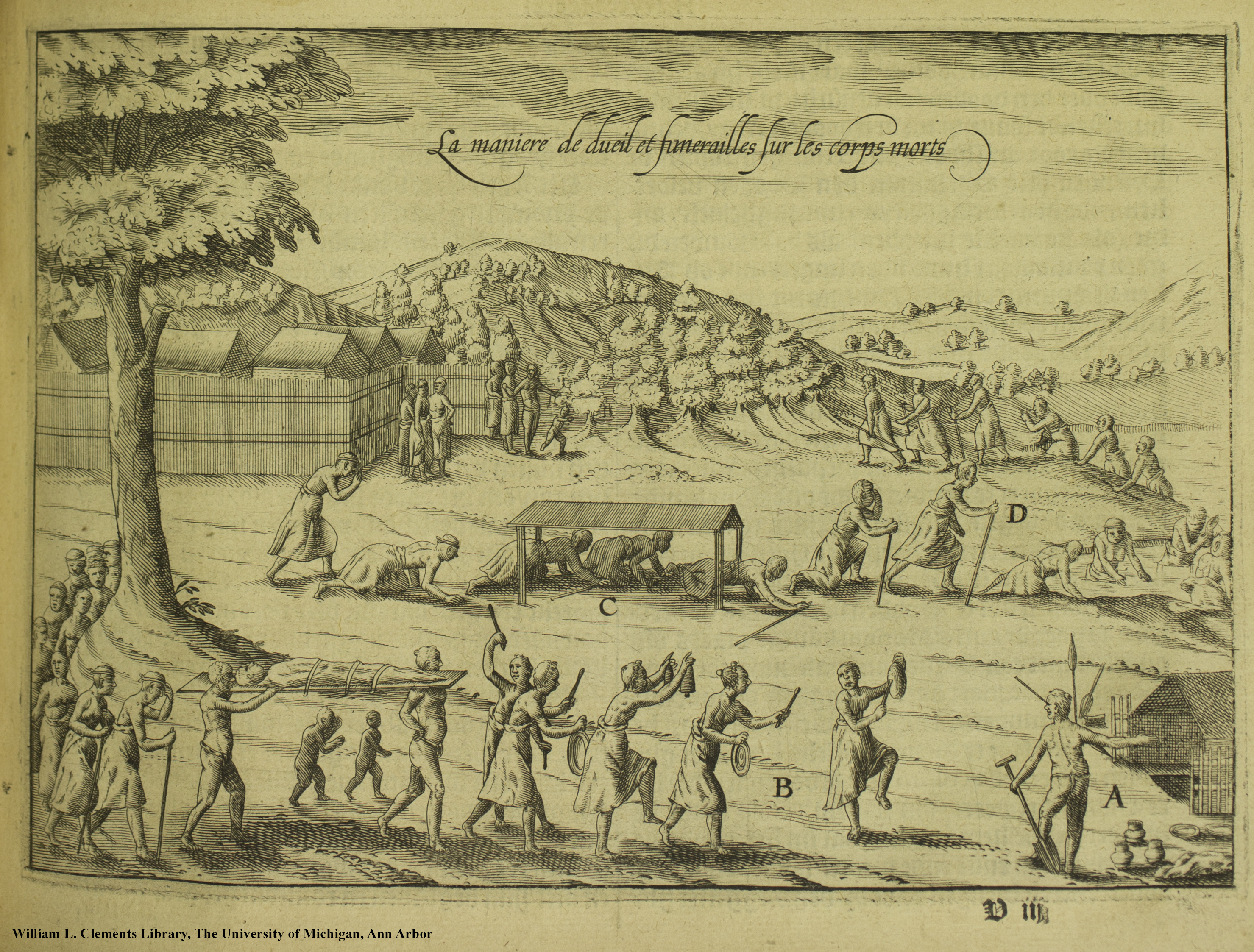“So Once Were We”: Death in Early America
Introduction
Mortality is a useful lens through which we may view many aspects of early American society. “So Once Were We”: Death in Early America explores American practices and traditions for coping with death, from the early years of European exploration and discovery to the early 20th century and the burgeoning modern funeral industry.
“So Once Were We” is a partial line from a once-common verse, which has many variations. One, from a Civil War-era tombstone in St. Clair County, Alabama, is “Remember us, as you pass by / as you are now, so once were we.” Other examples may be found in the section on Monuments and Stonework. The title embodies several themes in the exhibit: the transatlantic movement of ideas and traditions, the universal experience of death, and personal and collective remembrance.
The 170 items showcased in this exhibit are representative of a greater body of primary resources available on the subjects of death, dying, and bereavement held by the William L. Clements Library. For example, the nearly 80 photographs and printed items from the Mark A. Anderson Collection of Post-Mortem Photography displayed in the exhibit only selectively represent the over 900 items that make up the Anderson collection.
The online exhibit “So Once Were We”: Death in Early America is an expanded version of a physical exhibit on display at the William L. Clements Library from October 17, 2011, to February 27, 2012.

The exhibit is arranged topically and includes in part:
- Examples of rare early European books with content pertinent to Native American funeral and burial practices (16th-17th century)
- Early books respecting French missionaries in America (17th century)
- Books and manuscripts related to mortality, disease, and medicine (18th-19th centuries)
- Memorial imagery: Printed items, photographs, and artwork (19th century)
- Post-mortem photographs: Memorial photographs taken mostly for private mourning purposes (19th-early 20th centuries)
- Books, photographs, manuscripts, and instruments respecting embalming, undertaking, and transportation (19th-early 20th centuries)
- Manuscripts, pamphlets, and photographs regarding American funerals (18th-19th centuries)
- Examples of 19th century funeral cards, images of floral arrangements, mourning stationery, and other memorial products
- Books, manuscripts, and photographs pertaining to 19th century mourning fashion (especially women’s fashions)
- Materials related to monuments, tombstones, epitaphs, and cemeteries (mostly 19th century)
- First-person accounts of the deaths of George Washington and Abraham Lincoln, with additional materials related to their funerals and public commemoration.

